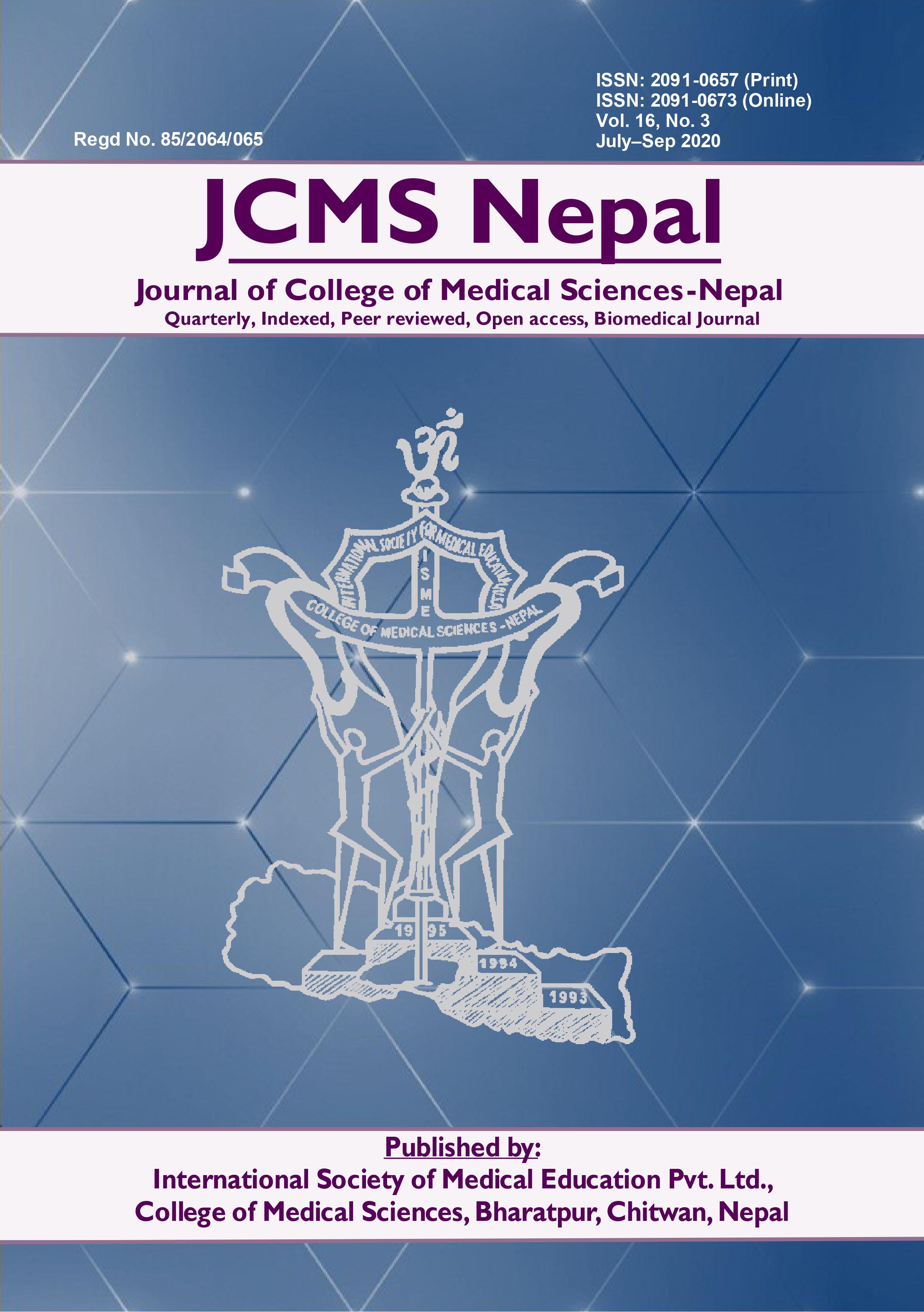Prevalence of Thyroid Dysfunction and its Relationship with Severity of Depression among Patients of Depression attending Tertiary Hospital
DOI:
https://doi.org/10.3126/jcmsn.v16i3.29832Keywords:
Prevalence; Depression; HDRS; ICD-10 DCR Criteria; Thyroid dysfunctionAbstract
Background: Thyroid dysfunction is common feature among patients presenting with depression. The aim of this study was to estimate the prevalence of thyroid dysfunction in patients with depression attending Psychiatry outpatient department of College of Medical Sciences and Teaching Hospital, Chitwan, Nepal and to investigate its relationship with the severity of depression.
Methods: A total of 259 who attended the Psychiatry OPD of College of Medical Sciences and Teaching Hospital were enrolled over a period of 6 months after taking informed written consent. These patients were diagnosed as depression as per the ICD-10/ DCR criteria. The severity of illness was determined by using HAM-D. Thyroid profiling was done against common thyroid hormones TSH, FT3 and FT4 by standard method. Data was analyzed using SPSS.
Results: Among 259 patients, thirty patients (18.40%) were found to have thyroid dysfunction, sub-clinical hypothyroidism was seen in 23 (14.1%) followed by 3.1% with overt hypothyroidism and 1.2% with overt hyperthyroidism. However, there was no significant association found between severity of depression and thyroid dysfunction.
Conclusions: This study concluded that there was high prevalence of thyroid dysfunction in patients with major depression. Thus screening of thyroid test among depressive patients may be helpful in proper management of cases.
Downloads
327
214




